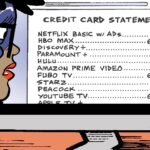“On TV & Video” is a column exploring opportunities and challenges in advanced TV and video.
Today’s column is by Brian Chap, CEO & Founder of Tech Recipes.
“If you want to become a great chef, you have to work with great chefs.” – Gordon Ramsay
As big connected TV players advance their buying platforms, marketers have to couple existing omnichannel Demand Side Platforms (DSPs), like Xandr, with emerging connected TV DSPs, like Roku. This creates revenue control for sellers, as buyers must access exclusive data and inventory within the seller’s walls. The result for buyers is more fragmentation and less holistic reach and frequency, and advertisers are forced to work within emerging walled gardens that offer proprietary data and inventory.
This landscape is a major challenge for brands, but there are some steps marketers can take to address the issues these walled gardens have created.
The streaming wars have fragmented the consumer experience by having too many apps. Advertisers are frustrated because they are being forced to purchase the ads from the owned and operated property, instead of through their existing DSP technology. This is a big concern due to lack of audience deduplication with direct buys.
Amazon, Roku, Samsung, Vizio and soon LG Ads will all offer an option to buy through their own DSPs. While there is benefit to the seller, buyers will have no way to manage their campaigns holistically and will be forced to take a multiplatform approach.
This leaves two ways to buy CTV inventory:
- Across an omnichannel DSP that can offer overarching frequency management and measurement
- Directly from each individual CTV device owner’s DSP, where exclusive data and inventory are available
The purpose of a DSP is to holistically manage a campaign’s reach and frequency across all channels. If more inventory and data are gated, how will we continue to manage our buys? From a buyer perspective, it makes no sense to add to the long list of technology options. Sellers do so to boost revenue while marketers pay more nonworking costs (tech).
This is another example of the industry making things more complex than they need to be!
What can marketers do about these walled gardens?
Consumer privacy is table stakes. Buyers and sellers can no longer bake cakes with ingredients that are sourced from third parties. All parties must have a fully baked, consumer-first, and privacy-compliant strategy accounting for the iOS 14 privacy-forward update and Google’s FLoC. As cookies will be available until at least 2023, can we use them or other unique identifiers (UID) to combat CTV buying fragmentation?
None of the CTV publishers can come close to the registered first-party data of Facebook or Google. This is why CTV companies are guarding their inventory and data in hopes of taking a bigger piece of the pie. A UID across all platforms would solve for this, but requires industry standardization to be successful. This won’t happen any time soon, because doing so would reduce the value of each player’s platform, inventory and data.
Here are three simple ways marketers can manage measurement and tracking to make the best use of their investment:
- Prioritize first-party data: Give consumers something of value in exchange for their data
- Trusted partnerships: Forge data-sharing partnerships with other marketers
- Trust but verify: Dictate reporting parameters that provide the greatest transparency
For the near future, we may have to accept that performance will be a proxy for holistic management and let the data guide us to the right inventory mix. In the interim, here are seven questions that you can use to challenge your partners during the negotiation phase:
- Are you integrated with any existing DSPs or do you plan to be?
- Are you planning to build a proprietary DSP and does that mean both data and inventory won’t be available outside of those walls?
- Will you have self-service or managed service offerings?
- Are there rebates or other incentives between the supply-chain participants that are not disclosed to advertisers? How can they be identified?
- How transparent are you going to be with costs? Will I be able to understand my tech costs, inventory costs and data costs separately?
- How should advertisers identify the difference between served and rendered impressions and the financial variances arising from it?
- What recommendations do you have to mitigate audience duplication across platforms?
Follow Tech Recipes (@reinventNYC) and AdExchanger (@AdExchanger) on Twitter.














